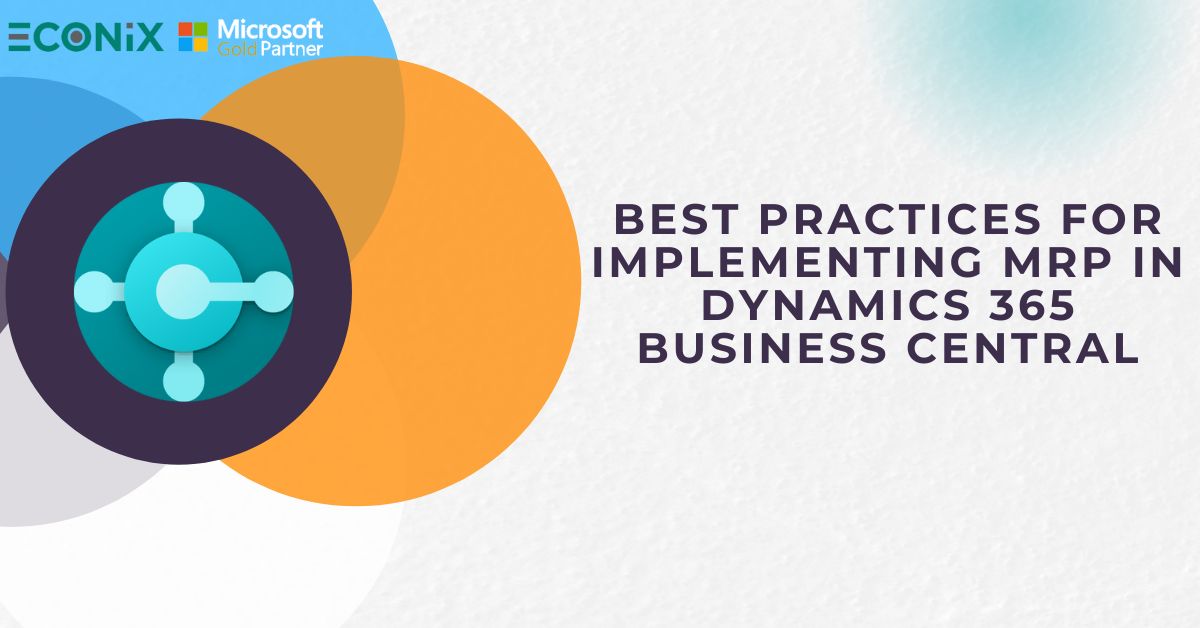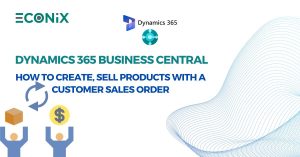Best Practices for Implementing MRP in Dynamics 365 Business Central

Introduction
Implementing Material Requirements Planning (MRP) in Dynamics 365 Business Central can greatly enhance an organization’s efficiency and accuracy in managing its inventory, production, and supply chain processes. MRP helps businesses forecast demand, plan production, and optimize inventory levels. However, a successful implementation requires careful planning, customization, and a clear understanding of the best practices involved. In this insight, we will explore the key steps and considerations for preparing to implement MRP in Dynamics 365 Business Central.
Assess Current Processes and Requirements
Before embarking on an MRP implementation, it’s crucial to thoroughly assess your organization’s current processes and requirements. This involves understanding your production methods, lead times, demand patterns, and existing inventory management practices. Identify pain points, bottlenecks, and areas that can benefit from MRP automation.
Set Clear Objectives
Establish clear and measurable objectives for the MRP implementation. These could include reducing lead times, optimizing inventory levels, improving on-time delivery, and increasing overall production efficiency. Clear objectives provide a roadmap for the implementation process and help track the success of the project.
Data Cleanup and Data Migration
Accurate data is the foundation of a successful MRP implementation. Clean up and validate your existing data to ensure accuracy and consistency. If migrating from another system, ensure a seamless transfer of essential data such as item master data, bills of materials, routing information, and supplier details.
Engage Cross-Functional Teams
MRP implementation impacts various departments, including production, procurement, sales, and finance. Engage cross-functional teams to gather insights, requirements, and expectations from each department. This collaborative approach ensures that the implemented MRP system aligns with the needs of the entire organization.
Customization and Configuration
Dynamics 365 Business Central offers customization capabilities to tailor the MRP module to your organization’s unique processes. Configure parameters such as lead times, reorder points, safety stock levels, and planning horizons to reflect your business reality accurately. This customization phase is critical in aligning the MRP system with your specific requirements.
Master Data Management
Accurate master data is a cornerstone of effective MRP. Ensure that item master data, bills of materials, and routing information are up-to-date and accurate. Establish protocols for maintaining data integrity moving forward, including clear ownership and approval workflows for any changes to master data.
Testing and Simulation
Prior to full deployment, conduct thorough testing and simulations of the MRP system. Test different scenarios, such as changes in demand, lead times, and capacity constraints, to validate the system’s responsiveness and accuracy. This testing phase allows for adjustments and fine-tuning before the system goes live.
User Training and Change Management
Prepare your team for the new MRP system through comprehensive training. Ensure that users understand how to input data, interpret results, and utilize the system’s features effectively. Implement change management strategies to address any resistance to the new system and promote user adoption.
After the MRP implementation, continuous monitoring is essential. Regularly review key performance indicators (KPIs) such as on-time delivery, inventory turnover, and production efficiency. Identify areas for improvement and make necessary adjustments to the MRP parameters and processes.
MRP doesn’t exist in isolation. Ensure seamless integration between the MRP module and other relevant modules within Dynamics 365 Business Central, such as inventory management, procurement, and financials. This integration enables accurate reporting, comprehensive insights, and holistic decision-making.
Implementing MRP in Dynamics 365 Business Central requires careful planning, collaboration, and a thorough understanding of your organization’s processes and needs. By following the best practices outlined in this insight, you can lay a strong foundation for a successful MRP implementation that optimizes your production, inventory, and supply chain processes. Remember that MRP is not a one-time project; it’s an ongoing journey of refinement and improvement to ensure your organization’s sustained growth and competitiveness.
LATEST INSIGHTS
-
Business Central customize pages for profiles
-
Adding Regional Formats to Reports in Dynamics 365 Business Central
-
Dynamics 365 Business Central – How to create Sell Products with a Customer Sales Order
-
Cash Flow in Dynamics Business Central Overview
-
Understand Location cards in D365 Business Central
REQUEST
FOR A CALL BACK
Provide discussion information and we’ll get back to you as soon as possible
Customer Satisfaction
Address
Corporate Office
Econix InfoTech Ltd.
10B-111 REGINA RD, WOODBRIDGE, ON L4L 8N5, Canada
Request a Business Consultation
Subscribe Newsletter
Copyright© 2018-2024 ECONIX InfoTech & Group Companies. All Rights Reserved



